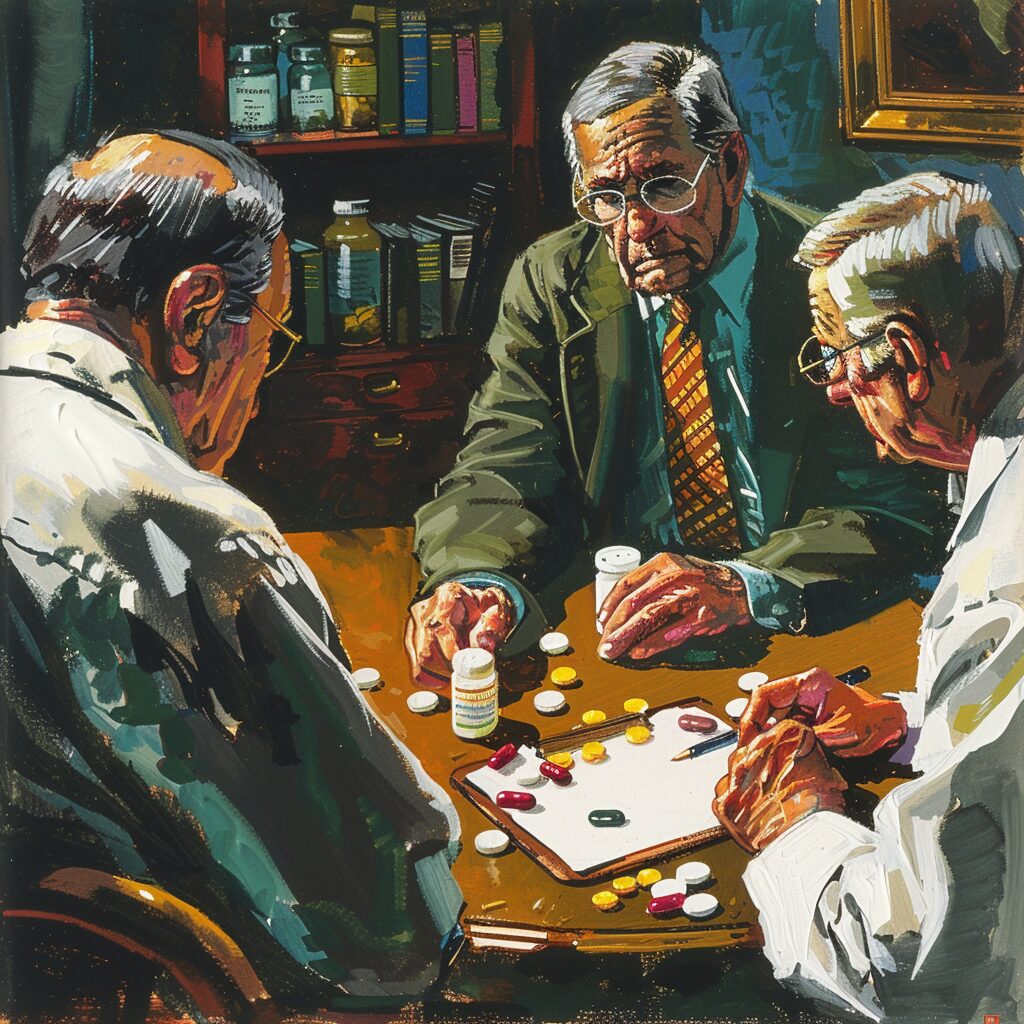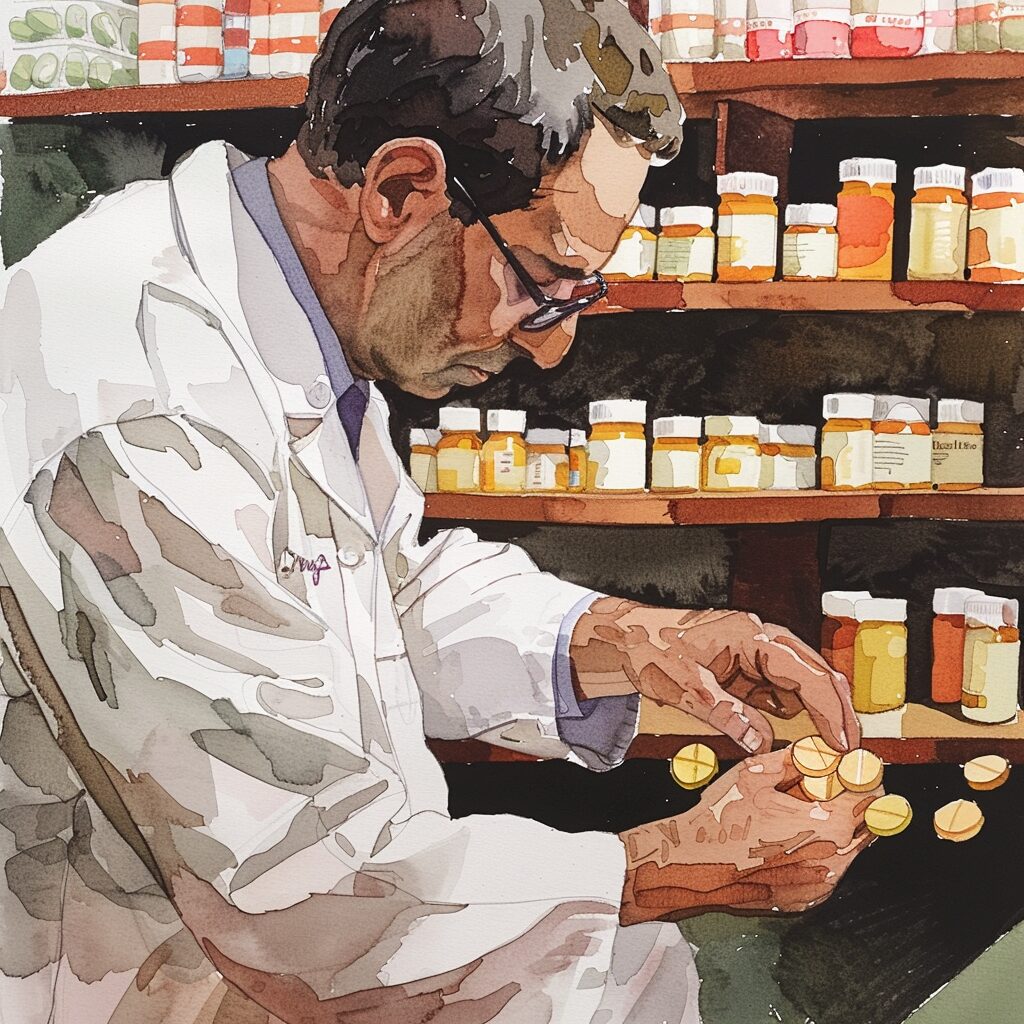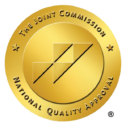If you are wondering who can prescribe methadone for opioid addiction treatment, this article provides the answer. In the United States, methadone can only be prescribed by certified healthcare providers at registered Opioid Treatment Programs (OTPs) or hospitals. These regulations ensure controlled distribution and limit misuse. Continue reading to learn about the role of physicians, the expanded authority of nurse practitioners, and how different regions like Canada handle methadone prescription.
Key Takeaways
- Methadone is prescribed under strict federal and state regulations, primarily at certified Opioid Treatment Programs (OTPs), and is utilized for opioid addiction treatment as well as chronic pain management.
- Professionals who can prescribe methadone for opioid addiction treatment are limited and vary by country, with physicians and nurse practitioners playing key roles depending on location-specific regulations.
- While methadone treatment provides several benefits in managing opioid addiction, including reducing withdrawal symptoms and illicit drug use, challenges remain such as potential for abuse and societal stigma towards patients and treatment.
Methadone Prescribing Regulations

Methadone prescribing in the US is governed by a tri-layered federal regulation system enforced by the Food and Drug Administration (FDA), Drug Enforcement Administration (DEA), and federal agents,. This regulatory framework, in place for over 20 years, aims to control the potential for abuse of this potent medication. In addition to federal oversight, state governments can impose their regulations, often stricter than federal requirements.
Methadone is primarily prescribed for opioid addiction treatment at certified Opioid Treatment Programs (OTPs) or hospitals, under the direction of federal legislation such as the Narcotic Addiction Treatment Act of 1974 and the Drug Addiction Treatment Act of 2000. This ‘closed system’ ensures that methadone is distributed responsibly, limiting any potential for misuse. It’s also worth noting that regulations have evolved over time. For instance, in May 2018, federal restrictions in the US were eased, eliminating the need for physicians to obtain a federal exemption from Health Canada to prescribe methadone for pain or opioid use disorder.
Opioid Treatment Programs (OTPs)
Certified OTPs, also known as methadone clinics, are specialized centers that play a crucial role in medication-assisted treatment (MAT) for OUD. Administered by the Substance Abuse and Mental Health Services Administration (SAMHSA), these programs function under stringent regulations to provide comprehensive care for patients.
Key services offered by OTPs include dispensing daily methadone doses and providing specialized counseling services, ensuring a holistic approach to tackling OUD. Methadone maintenance treatment (MMT) is indicated for patients with a history of opioid dependence, offering them the opportunity to break free from the vicious cycle of opioid addiction.
Pain Treatment
Beyond its role in addiction treatment, methadone’s potent analgesic properties make it an effective solution for chronic pain management. Any practitioner licensed to prescribe medications can prescribe methadone for pain, provided they hold a Schedule II DEA license,.
While this broadens the scope of methadone application, it doesn’t eliminate the need for adherence to federal and state regulations. Physicians prescribing methadone for pain management must participate in prescription monitoring programs (PMPs) to prevent misuse and diversion. The Canadian model offers an insightful example, with pain management through methadone scrutinized by provincial health ministries and regulatory colleges to ensure adherence to best practice guidelines and safe prescribing standards.
Professionals Authorized to Prescribe Methadone

When it comes to prescribing methadone for opioid addiction treatment, not all healthcare professionals have the same level of authority. For instance, licensed physicians are not authorized to prescribe methadone for opioid addiction treatment. However, proposals are in place to permit board-certified addiction medicine specialists to prescribe methadone from primary care settings, which would expand the pool of professionals who can provide OUD treatment safely and responsibly.
Interestingly, the sphere of prescribing authorities is broader in Canada. Nurse practitioners now have the authority to prescribe methadone for OUD, as part of an inclusive approach to healthcare. This change allows for greater access to treatment for those struggling with opioid use disorder. Let’s delve deeper into the roles of these professionals in the methadone prescribing process.
Physicians
The authority for physicians to prescribe methadone is governed by the Narcotic Addiction Treatment Act of 1974 and the Drug Addiction Treatment Act of 2000. These legislative acts establish specific criteria and guidelines that physicians must meet to become licensed to prescribe methadone for opioid addiction treatment.
Adherence to these regulations is mandatory for physicians operating within OTPs. This ensures the safe and effective distribution of methadone for OUD patients, protecting both the patients and the community at large.
Nurse Practitioners
In the United States, nurse practitioners are authorized by the U.S. Drug Enforcement Agency to prescribe methadone as a schedule II narcotic controlled substance, although the extent of this authorization can differ by state. As integral members of the healthcare system, nurse practitioners are trained to conduct comprehensive assessments and manage individualized care plans for patients, including both pharmacological and supportive therapies.
However, their role in providing medication-assisted treatment for opioid use disorder (OUD) is not without challenges. They often encounter barriers such as:
- Stigma towards patients with OUD
- Financial limitations
- Restrictive federal laws
- Challenges in accurately assessing patients for OUD.
Fortunately, in Canada, nurse practitioners gained the authority to prescribe methadone for opioid use disorder treatment in 2018, indicative of an international trend towards varied location-based regulations.
Canadian Model
Canada’s approach to methadone prescribing significantly differs from the United States. In Canada, physicians can prescribe methadone for opioid use disorder in an office-based setting without needing a federal exemption. The medication can be dispensed through community pharmacies, introducing a rapid-access model with walk-in appointments and same-day treatment initiation.
Canada’s provinces and territories independently regulate methadone prescribing, sometimes necessitating specialized training for providers. Patients access methadone treatment through provincial health coverage, with the medication often included under supplemental benefits. Pharmacists dispensing methadone engage in mandatory initial training and periodic updates offered by the Ministry of Health at no charge to ensure quality care and safe dispensing practices.
Accessing Methadone Treatment

Accessing methadone treatment is a multi-step process that begins with a diagnosis of opioid use disorder by a qualified healthcare provider. Following the diagnosis, the individual must:
- Enroll in a certified opioid treatment program.
- Complete the initial intake, which includes medical evaluations and counseling.
- Comply with federal and state regulations, such as providing their medical history and consenting to participate in counseling and therapeutic services.
Methadone treatment enables individuals to manage cravings and withdrawal symptoms, blocking the high from opiates like heroin and improving their quality of life. Patients on methadone maintenance treatment are able to engage in productive activities, reducing the time spent obtaining and using heroin. However, methadone treatment requires informed consent that includes understanding the treatment plan, expected length of treatment, and associated risks.
Finding a Methadone Clinic or Provider
Finding a methadone clinic or provider is a critical step in accessing treatment. Individuals can do this by:
- Calling their health insurance company
- Researching online
- Contacting local mental health or substance use clinics
- Using the Opioid Treatment Program Directory on SAMHSA’s website, which provides a comprehensive list of certified OTPs across the United States.
Another lifeline for individuals seeking help is SAMHSA’s National Helpline. This 24-hour confidential information service offers referrals to local treatment facilities, support groups, and community-based organizations for individuals and families facing substance use disorders. When individuals transition from an inpatient to an outpatient setting, the program should facilitate their referral to an appropriate outpatient OTP for continuous methadone treatment.
Telemedicine and Online Services
Telemedicine has emerged as a powerful tool in the realm of addiction care, offering superior outcomes compared to traditional care models, including improved survival, retention in treatment, and reductions in illicit drug use. Telemedicine addresses substance abuse treatment and addiction treatment through video appointments, messaging, and web-based courses, providing a comprehensive approach to medication-assisted treatment.
Telemedicine significantly increases patient engagement and convenience, enabling care to be seamlessly integrated into patients’ daily lives due to the accessibility of receiving treatment at home. Despite its benefits, telemedicine faces barriers such as inconsistent insurance coverage, varying state licensing laws, and concerns regarding privacy within patient homes.
Methadone Dispensing Process

Methadone clinics typically include a team of medical providers, nurses for dispensing, and counselors for additional support. Some pharmacies also administer methadone as part of Medication-Assisted Treatment, working in close collaboration with the pharmacy team. The process of dispensing methadone is governed by stringent regulations and protocols aimed at improving retention and treatment outcomes through regular reviews and adjustments, while ensuring patients adhere to treatment rules.
Keeping accurate records of methadone dispensing is crucial for monitoring patient progress and maintaining the integrity of the treatment program. Dispensing methadone through pharmacies may reduce costs for patients and insurance providers, making it a preferable option to traditional Opioid Treatment Programs.
Pharmacists who dispense methadone engage in:
- Assessing patients
- Monitoring missed doses
- Withholding doses if intoxication or sedation is apparent
- Navigating operations to ensure better patient interaction.
Daily Dosing and Direct Supervision
The initial phase of methadone treatment usually begins with daily supervised dosing to ensure adherence to the treatment plan and to observe how patients respond to the medication. This practice is crucial in preventing misuse and diversion, and to safeguard patient health, especially early in the treatment.
The principal hazard with methadone, particularly during the early stages of treatment or when combined with depressants, is the risk of overdose. To reduce this risk, stringent dosing protocols and careful oversight are put in place.
Management of patients who miss doses or who do not retain their dose due to vomiting involves potential dose adjustment or re-dosing under close supervision.
Take-Home Doses and Flexibility
Take-home doses of methadone offer flexibility for stable patients. SAMHSA has proposed to continue the increased flexibility of take-home methadone doses that was introduced during the COVID-19 pandemic. In response to the pandemic, provinces introduced policy modifications that made it easier for patients to access take-home doses, with Ontario de-emphasizing urine drug screenings as a critical factor.
However, there are strict criteria for receiving take-home doses without supervision, including the patient not having active substance use disorders, consistent clinic attendance, and no serious behavior problems or recent diversion. For those deemed as less stable, OTPs may provide a maximum of 14 days of take-home medication, relying on clinical judgment of patients’ capabilities to manage their doses safely.
Benefits and Limitations of Methadone Treatment
Methadone treatment offers several benefits, including:
- Mitigating withdrawal symptoms and enabling patients to engage more effectively in therapy
- Addressing the underlying causes of opioid use
- Reducing illicit drug use and criminal activity among patients
- Allowing patients to engage in productive activities, reducing the time spent obtaining and using heroin
Research shows that methadone maintenance is effective in achieving these outcomes.
However, methadone treatment is not without its limitations. The biggest risk of methadone use in addiction treatment is the potential for abusing the medication, as methadone itself can be addictive. Furthermore, an assessment of the balance between the risks and benefits of methadone indicates that current methadone policies may prioritize protection from methadone over addressing the consequences of untreated addiction.
Treatment Retention and Effectiveness
Methadone maintenance treatment encompasses detoxification therapy to reduce withdrawal symptoms and maintenance therapy to reduce or eliminate compulsive opiate use. Methadone maintenance is effective in reducing illicit drug use and criminal activity among patients.
However, it’s important to note that treatment retention rates vary. For instance, methadone treatment retention among patients receiving methadone in Ontario was between 39% and 49% at 1-year in various regions of the province. Despite these variations, MMT significantly reduces drug injecting and thus HIV transmission, as well as the death rate associated with opioid dependence.
Challenges and Concerns
The implementation of methadone treatment comes with certain challenges. Some of these challenges include:
- Adjustments to regulatory controls to maximize methadone treatment benefits while mitigating risks related to diversion and misuse
- Stigma and negative attitudes among pharmacy staff toward methadone and addiction, which can affect the treatment process
- The importance of specific training materials that address these perceptions
Patients on methadone treatment often encounter concerns about side effects, including those not mentioned in SAMHSA education, such as potential damage to teeth and bones. Research indicates that patients’ decisions regarding methadone treatment are influenced by various factors, including:
- Age
- Housing stability
- Appropriate dosing
- Understanding of potential treatment cessation.
Alternative Treatments for Opioid Addiction

While methadone is a potent and effective treatment for opioid addiction, it’s not the only option. Alternative treatments for opioid addiction include buprenorphine-based medications and non-pharmacological approaches. Buprenorphine-based medications like Suboxone and Zubsolv are considered to have fewer side effects and can be safer during pregnancy compared to methadone,.
Apart from medication, cognitive-behavioral therapy, contingency management, and motivational interviewing are key non-pharmacological approaches utilized in opioid addiction treatment to modify behavior and thought patterns related to opiate addiction. Support groups and peer recovery support services play a significant role in the treatment process by providing a supportive community and guidance from individuals with lived experience.
Buprenorphine
Buprenorphine, a partial agonist at the mu-opioid receptor, reduces euphoria and potential for abuse compared to full opioid agonists. Its unique interaction with opioid receptors leads to a ‘ceiling effect,’ lowering the risk of respiratory depression and overdose.
When combined with naloxone to create medications like Suboxone, buprenorphine discourages intravenous misuse by blocking the opioid effects when injected. Buprenorphine can be prescribed in different forms, catering to various patient preferences and needs.
However, patients undergoing buprenorphine tapering should be closely monitored for withdrawal symptoms and overdose risks, with naloxone prescribed as a precaution.
Non-Pharmacological Approaches
Non-pharmacological approaches provide additional support and holistic treatments to enhance overall well-being and recovery success. Cognitive-behavioral therapy, contingency management, and motivational interviewing are key non-pharmacological approaches utilized in opioid addiction treatment to modify behavior and thought patterns.
Support groups and peer recovery support services play a significant role in the treatment process by providing a supportive community and guidance from individuals with lived experience. Holistic treatments such as:
- meditation
- acupuncture
- massage
- yoga
- exercise
- nutritional counseling
Can alleviate opioid withdrawal symptoms and enhance overall well-being, serving as beneficial components within a comprehensive strategy to treat opioid addiction.
Summary
In conclusion, methadone treatment is a complex but viable pathway towards recovery from opioid addiction. The process involves navigating through stringent regulations, understanding the roles of different healthcare professionals, and accessing the right treatment facilities. While methadone is an effective treatment option, it’s important to understand its benefits and limitations. Other treatment options, such as buprenorphine-based medications and non-pharmacological approaches, also offer valuable alternatives. Regardless of the chosen path to recovery, the journey is never easy, but with the right support and resources, it’s a journey worth taking.
Frequently Asked Questions
Can doctors prescribe methadone in the US?
Yes, doctors in the US can prescribe methadone, but they need a DEA license to do so.
Why is methadone so regulated?
Methadone is regulated due to its classification as a Schedule II substance with a high potential for abuse, leading to severe psychological or physical dependence. This regulation is in place to control its potential for abuse and dependency.
How is methadone dispensed?
Methadone is dispensed through certified OTPs or pharmacies under strict regulations and protocols, ensuring safe distribution and usage.
What are the benefits and limitations of methadone treatment?
Methadone treatment can effectively reduce illicit drug use and improve treatment retention, but it carries a risk of misuse and side effects. Be cautious when considering this option for addiction treatment.
Are there alternative treatments for opioid addiction?
Yes, alternative treatments for opioid addiction include buprenorphine-based medications, cognitive-behavioral therapy, and support groups. These approaches offer alternatives to traditional opioid addiction treatment.









